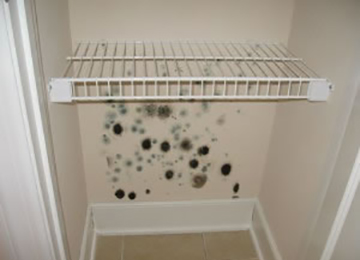The mere mention of the word ‘mold’ tends to cause anxiety about the quality of the air we breathe in our homes and workplaces. Many of us have seen pictures of black mold growing on walls in homes that have been flooded, but did you know that even homes that don’t have mold growing on the walls still have millions of microscopic spores floating in the air? These spores are released as the result of fungi reproduction. They are relatively harmless until they settle on wet or damp organic surfaces. That’s when they start growing and causing trouble. As wet surfaces dry, the mold releases new spore into the air to find a more suitable environment. Mycotoxins sometimes can also be produced by mold as part of their natural defense mechanism when disturbed. They can be transmitted in spores or dust and inhaled by humans, causing flu-like allergic reactions. Symptoms include itchy, watery eyes, coughing, bronchial and nasal passage irritation and inflammation, runny nose and sneezing.
Some of the more common molds are: Aspergillus sp., Fusarium sp., Penicillium sp., Cladosporium sp., Alternaria sp., Paecilomyces sp. and Stachybotrys sp. The health risks associated with mold are currently being researched although certain effects such as allergic reactions, development of hypersensitivity pneumonitis and inducement of childhood asthma seem to be more widely accepted among medical professionals as being causally related to exposure to molds. Some people react differently to mold and mold byproducts than others. Research has shown that there is a correlation between the presence of mold and asthma in children. In fact, children living in homes with high levels of mold are reported to have twice the risk of developing asthma. Although reactions are often immediate, they can also have a delayed onset. This makes it more difficult to directly associate them with a mold source.
Since immune systems among individuals are different, and outdoor air concentrations vary by season, regulations regarding acceptable spore concentration levels in interior spaces have not been established at a federal level. However, the EPA, OSHA and other professional associations have developed some guidelines for how to address mold issues in buildings.
For more information contact Bev Sedon, an environmental scientist with our Chantilly office.

